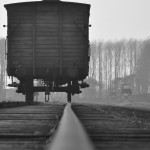
At 3:00 AM on Sunday, 6 August 1944, Gestapo agents burst into the third floor apartment in Paris belonging to Jacques and Hélène Boulloche (28, avenue d’Eylau). They were looking to arrest Christiane Boulloche, Jacques and Hélène’s 20 year-old daughter. The Boulloche sisters, Christiane and Jacqueline, and their brother, André, had joined the fledgling resistance movement in Paris at the outset of the Nazi occupation beginning in June 1940.
What made these 3 Résistants different than most? Well, first of all, they survived (André was one of the few who returned from the extermination camps—three including Auschwitz). The life expectancy of a resistance member in Paris (especially after Hitler invaded the Soviet Union and the resistance movement became more active) was about 4-weeks. The second major difference was that they joined early on without having any political agenda. They joined because it was the right thing to do. Many of the Résistants during the subsequent years of occupation were communists and their leaders had political agendas. Towards the end when it became clear the Allies would liberate France and Paris, many people “joined” the resistance movement. Read More The Last Train Out of Paris

